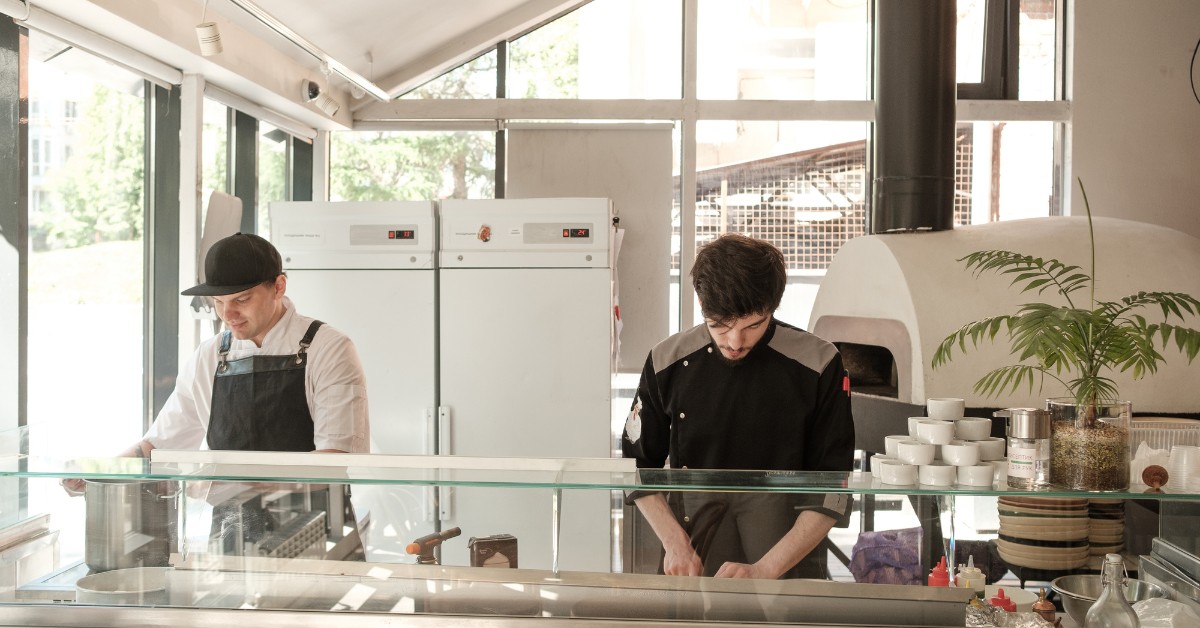Setting up a kitchen for a real business isn’t the same as just putting together your kitchen at home. It’s a lot more serious. Things have to work fast, stay clean, and hold up to being used over and over again, every single day. And if something’s wrong with the setup, even small stuff can become a huge problem once things get busy.
It’s not about having the fanciest gear or spending the most money. It’s about knowing what actually works in a commercial space. A lot of people starting their first food business make the same mistakes—and it slows everything down, wastes money, or makes working in the kitchen way harder than it needs to be.
Here’s what usually goes wrong, and what to think about if you want your kitchen to actually work.
Trying to Save Money on the Wrong Stuff
One of the biggest mistakes people make is going cheap on equipment that gets used all day. Like buying a small, basic fridge to “start out” or a second-hand oven that’s already worn out. It might feel smart at the time because you’re saving money—but if it breaks during lunch rush or can’t keep up with orders, you’ll end up spending more to replace it later.
That doesn’t mean you need the most expensive tools out there. It just means knowing where quality really matters. Things like refrigeration, prep benches, and dishwashers are used nonstop. It makes more sense to buy ones that are made for commercial use from the start.
If you’re not sure where to begin, companies like KEA have options built for busy kitchens. They’ve got the kind of gear that’s made to last and actually hold up under pressure.
Picking the Wrong Layout
Another big mistake is not thinking enough about the kitchen layout. Like, where the sink goes. Where the prep happens. How people move from one area to another. Some kitchens look nice on paper, but when you actually try to cook in them, they’re just… awkward.
If people have to keep walking past each other to grab stuff, or there’s only one spot to chop veggies and someone’s always standing there, things get annoying fast. And when it’s busy, those little delays turn into major problems.
The layout should feel natural. You want clean zones, cooking zones, and storage that makes sense. Everything should be in reach—so no one’s running around trying to find knives or trays in the middle of service.
Forgetting About Cleaning (Until It’s Too Late)
No one likes thinking about cleaning, but in a commercial kitchen, it’s a huge deal. And if you don’t plan for it when setting things up, you’ll regret it later. Like when the grease traps overflow or there’s no good spot to dry dishes.
Everything needs to be easy to wipe, scrub, or rinse. That means stainless steel surfaces, sealed flooring, and sinks that are actually big enough to clean the stuff you’re using. A tiny sink in a giant kitchen doesn’t make sense—and it ends up causing a backlog.
Health inspections are serious, too. If your space isn’t set up to stay clean, it’s not just annoying—it can shut your whole business down.
Not Planning for Storage
People often forget how much storage a kitchen really needs. It’s not just for food—it’s also for tools, cleaning stuff, containers, trays, and everything in between. If there’s no space to put things, they end up on counters, in boxes, or piled on the floor. That makes the whole space feel crowded and messy.
You need places to store things safely and quickly. Wall shelves, under-bench storage, and dry goods racks all help. If the staff can’t find things fast, they lose time—and during service, time is everything.
Buying Things Before Figuring Out the Menu
This one happens a lot. People get excited, buy all kinds of equipment, and then later realize they don’t need half of it. Or worse, they’re missing something important because the menu changed.
You don’t need a fancy pasta cooker if you’re mainly making sandwiches. You might think you need a giant oven, but if most of your food is grilled, it won’t get used that much. The right way to do it is to plan the menu first—then pick the tools that actually match it.
That way, you’re not wasting space or money on things you don’t need. And you won’t be stuck buying last-minute equipment after opening.
Underestimating the Importance of Prep Space
Cooking gets most of the attention, but prep is where most of the work happens. Chopping, mixing, portioning—all of that needs space. And if there’s only one small bench that everyone’s trying to use, it gets frustrating fast.
You need enough benches so people aren’t bumping into each other. You also need surfaces that are safe and solid. Wobbly tables or cheap wooden counters just won’t last. Prep space should be wide, strong, and easy to clean. It’s one of the best investments you can make for your team.
Not Thinking About What Happens During a Rush
It’s easy to plan a kitchen when no one’s in it. But things change during a lunch rush. People move faster. They need more room. There’s more noise, more mess, and more stress. If your setup can’t handle that, it’s going to fall apart.
Think about how many people will be working at once. Can they move around without crashing into each other? Can they all reach the fridge or the stove without blocking someone else? That’s what really matters when things get busy.
A kitchen isn’t just about the tools—it’s about how people move and work together. If the setup gets in the way, nothing runs right.
Skipping the Right Equipment to Try and “Make Do”
Sometimes people skip stuff they think they don’t need—like a proper dishwasher, a prep sink, or a ventilation hood. They figure they’ll just make it work with what they’ve got. But most of the time, that just makes more work.
You don’t have to get everything all at once, but some gear isn’t optional. If you’re spending hours hand-washing dishes because there’s no dishwasher, or the kitchen’s full of smoke because there’s no vent, the whole place suffers. Even the food can get worse when things aren’t running right.
What It All Comes Down To
Running a kitchen is hard enough already. But if your space isn’t set up properly, it becomes way harder than it needs to be.
The most common mistakes aren’t about forgetting a fancy gadget. They’re about missing the basics—like how people move, where things go, and what gets used most. The best kitchens are built to be fast, safe, and easy to clean. They don’t just look good—they work.
If you’re setting up a kitchen for business, plan smart. Think about your menu. Get the right gear. Make space for cleaning, prep, and storage. And remember that a good setup helps your team work better, feel less stressed, and keep customers happy.
It’s way easier to do it right the first time than to fix it all later.









